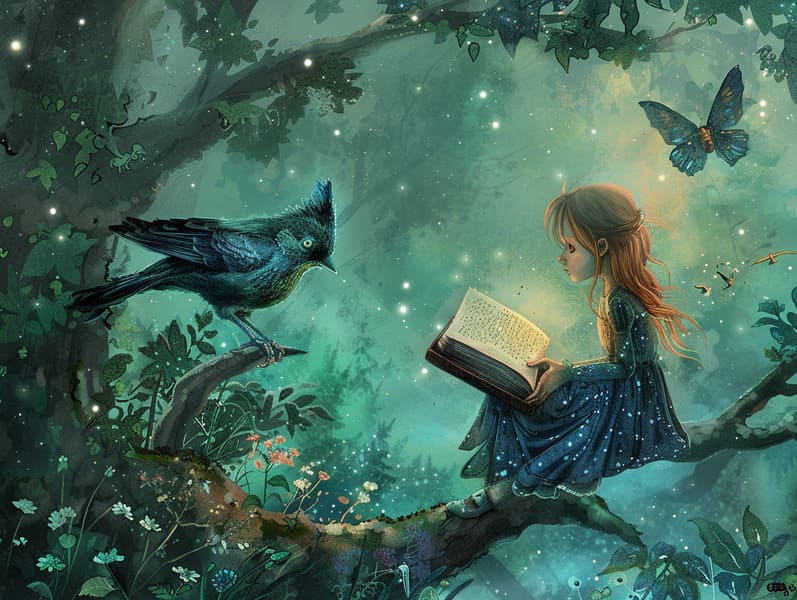The Start of Children's Fairy Tales and Its Everlasting Beauty.
The Start of Children's Fairy Tales and Its Everlasting Beauty.
Blog Article

Fairy tales for kids have historical significance. These narratives have been told from one generation to the next long before they were ever published. They arose from a variety of societies, including Eastern traditions. They were initially told among mature audiences, often carrying themes and messages pertaining to the societal norms and beliefs of the time.
The renowned Brothers Grimm, the two Grimm brothers, were among the first to compile and release many of these beloved narratives. Their anthology, "Grimm's Children's Stories," included narratives like "The Story of Cinderella," "Little Brother and Little Sister," and "Little Snow White," which have since become essentials in the world of children's fairy tales. Similarly, Hans Christian Andersen's fantastical fairy tales, such as "The Sea Maid," and "The Ugly Duckling," have enchanted hearts worldwide, guaranteeing their place in the pantheon of classic fairy tales.
Despite their historical roots, these tales remain as pertinent as ever, especially as bedtime stories for kids. These delightful tales are now available in many formats, including vibrantly illustrated books, enchanting animations, and digital fairy tales.
Their enduring popularity can be traced to several fascinating points:
Vital Lessons: Traditional fairy tales often offer important moral lessons. Fairy tales like "The Story of the Boy Who Cried Wolf" teach the virtue of truth, while "The Race of the Tortoise and the Hare" stress the qualities of determination and meekness. These narratives offer little ones clear distinctions between truth and falsehood, shaping their moral compass in a subtle yet deep way.
Compassion and Insight: Traditional fairy tales frequently depict characters facing trials and tribulations, fostering readers to relate with their struggles and root for their triumphs. For instance, "The Tale of Beauty and the Beast" points out the significance of seeing beyond the surface to acknowledge the inner core of a being, nurturing compassion and insight.
Cultural Insights: Many classic fairy tales are deeply embedded in the cultural contexts from which they emerged. Understanding these fairy tales can provide intriguing perspectives into different beliefs, fostering a sense of cultural understanding and discernment.
Fantasy and Imagination: The imaginative elements in ancient fairy tales—talking beasts—revitalize children’s fantasy worlds. These stories lead readers to fantastical realms, provoking fantasy ideas and a sense of curiosity that endures a lifetime.
Old fairy tales are not only alluring but also enlightening. They work as fantastical tools in nurturing various cognitive and emotional skills in kids. When fairy tales are spoken out loud, they advance language development by showing new lexicon and complex sentence structures. This practice also develops auditory skills and concentration, as kids concentrate deeply, ready to see check it out what happens next.
Furthermore, examining the themes and characters of classic fairy tales can nurture logical thinking and thinking skills. Kids are instructed to detect patterns, expect results, and comprehend cause and effect. These conversations also advance young readers reveal their thoughts and feelings, cultivating their emotional intelligence.
In today’s technological era, the proliferation of free fairy tales online has made these fairy tales more accessible than ever. Digital sites and programs offer ample collections of bedtime fairy tales that can be accessed or heard anytime, anywhere. Fairy tales spoken are particularly sought after, featuring an immersive method for little ones to be a part of these whimsical stories. Read-aloud stories and read-out-loud stories transport characters and settings to life, often complemented by mesmerizing harmonies and soundtracks that elevate the tale journey.
The unfading fascination of timeless fairy tales lies in their ability to modify to changing times while keeping their core values. Contemporary adaptations of these narratives often introduce more varied characters and modern settings, making them accessible to today’s audience. However, the central morals of fortitude, charity, and fair-mindedness remain unchanged, continuing to strike a chord with listeners of all ages.
Old fairy tales also offer a sense of ease and closeness. They confer a well-structured narrative with a straightforward beginning, middle, and end, often winding up with the wrap-up of conflicts and the triumph of virtue over vice. This foreseeability can be comforting for young readers, giving a sense of security in an fluid world.
Ancient fairy tales continue to allure and instruct new generations, maintaining their allure and significance in modern society. As children's bedtime stories, they deliver a perfect blend of delight and instruction, promoting moral values, empathy, and creativity. The abundance of free fairy tales online and the likability of fairy tales voiced warrant that these traditional fairy tales remain accessible to new generations.
By conserving and distributing these stories, we continue to treasure the rich tapestry of cultural heritage and cultural heritage. Whether you are exploring a colorful picture book, exploring a digital library, or listening to an spoken story, the appeal of timeless fairy tales is always within reach. These stories remind us of the unwavering power of tales and its ability to link us across time and space.
No matter if you are enjoying a beautifully illustrated book, delving into a web collection, or listening on an narrated book, the beauty of Grimm's fairy tales is always within reach.
These fairy tales show us of the lasting spell of tales and its ability to draw us together across centuries and lands, forging a link that captivates and teaches alike.